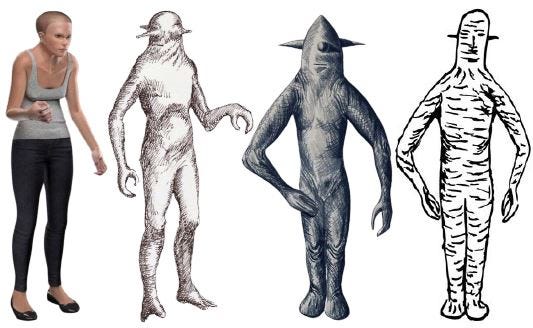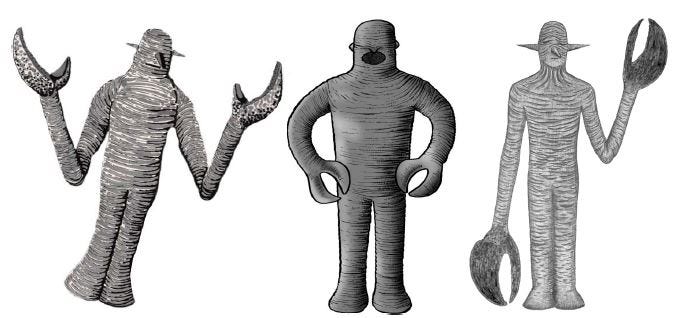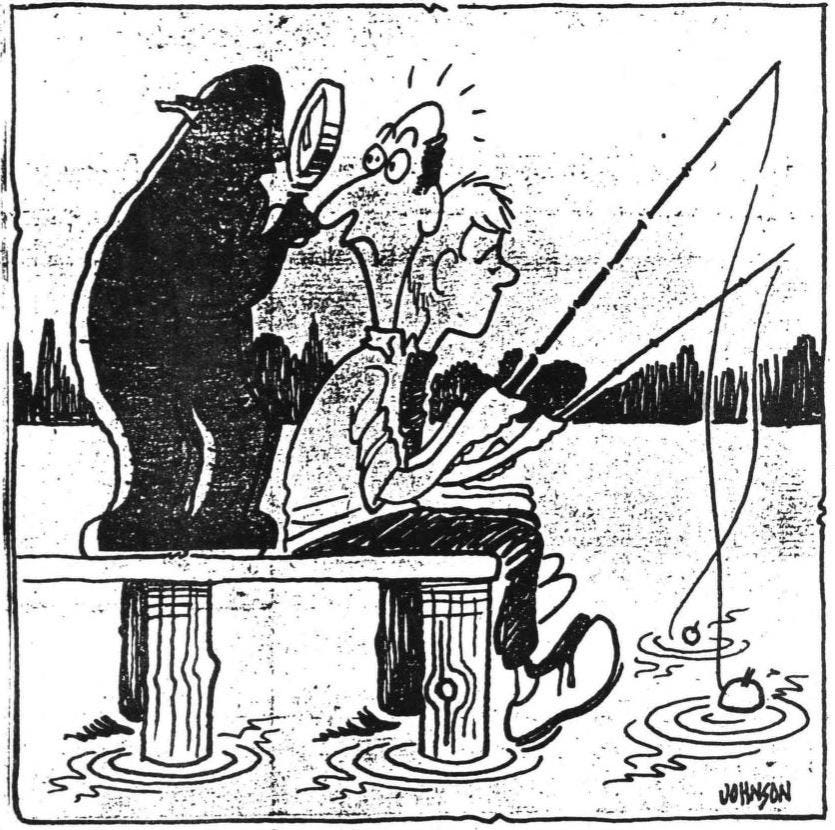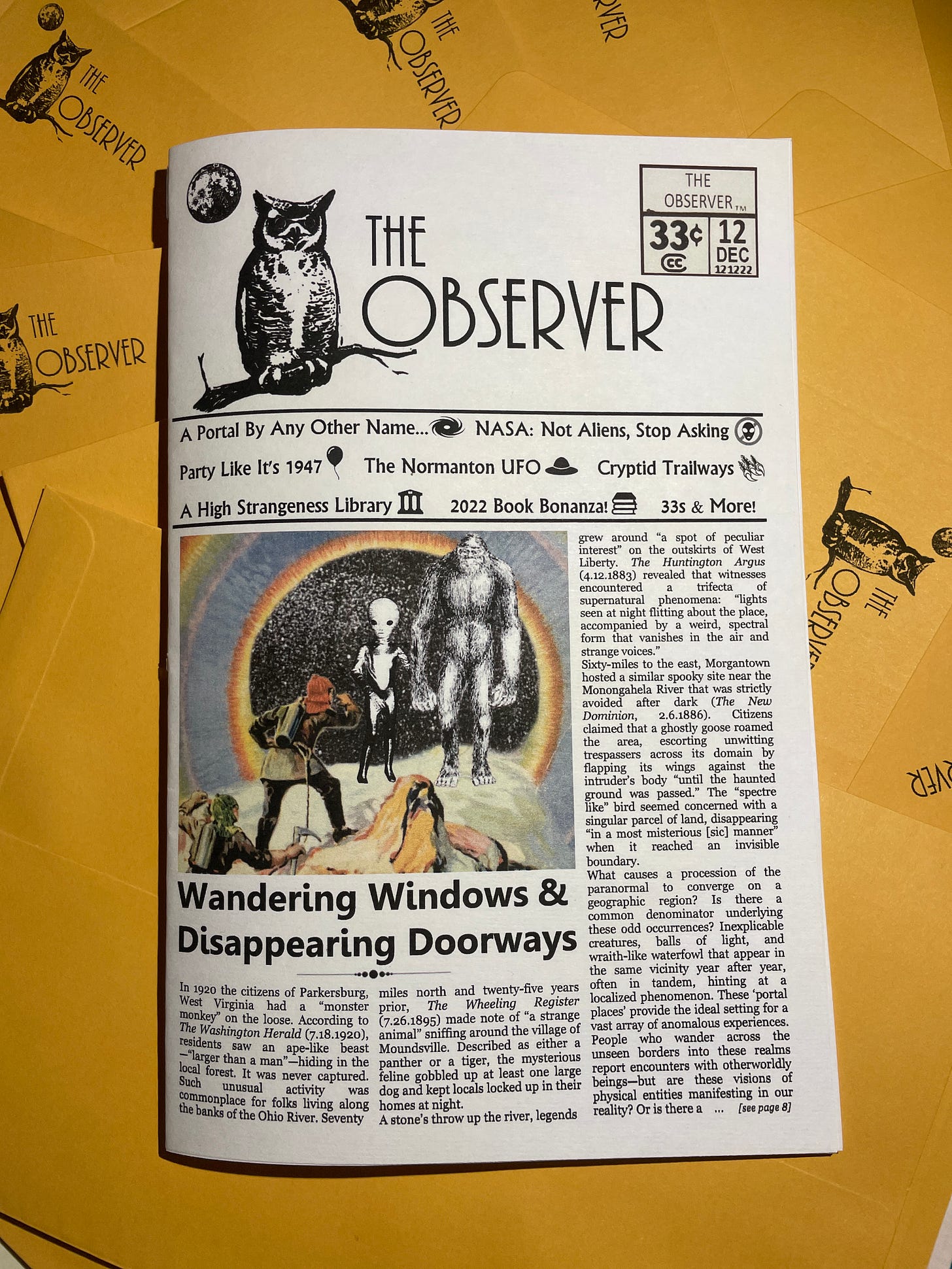Are flying saucers piloted by time-traveling humans from the future? A study sponsored by TollFreeForwarding (yeah, us either) produced a model of what our species might look like 1,000 years from now. The researchers operated under the assumption that society would continue to fawn over electronic gadgets for the next millennium, leading to an overuse of smart-devices and computers. With this as the premise, they arrived on a set of physical features that could develop to accommodate our increasingly tech-heavy lifestyle.
One potential change involved our hands. Instead of the expandable, five-finger-high-fiving appendages we’ve grown accustomed to, future humans might have claw-shaped mandibles at the ends of their limbs. This condition, referred to as “text claw,” may come about because of the way many people clutch their cell phone and computer mouse. These bad posture habits could also contribute to an elbow mutation whereby our arms become locked into a 90-degree angle.
Another possible adaptation was to our neck and shoulders. Due to a societal screen addiction, people are constantly looking down at their devices, then up at their televisions and monitors. Researchers surmised that this repetitive motion (known as “tech neck”) could lead to a population of humans with shorter necks and heads that sit lower on their shoulders.
The study also proposed that later generations would be smaller on average than we are today. It determined that technology is changing the way we interact with each other to such an extent that it will remove the need for future humans to grow bigger or stronger to survive. While the validity of the project’s conclusions are up for debate, the bodily mutations it predicts remind us of a well-known alien encounter that took place almost 50 years ago.
If you’re familiar with UFO history, you probably recognize the description of these short, neck-less entities with bent-arms and pincer-like appendages. They bear more than a passing resemblance to the creatures that reportedly abducted Calvin Parker and Charles Hickson in 1973.
The Mississippi duo were fishing along the banks of the Pascagoula River one night when they witnessed a glowing blue object come down from the sky. After the “craft” came to a stop in front of their position, they were taken aboard by a trio of five-foot-tall humanoids with clawed hands and no discernible necks. Hickson later told an interviewer that “they didn’t have a neck, and their heads seemed to come directly to their shoulders.” Most illustrations of these beings also show them with arms cocked at a robot-like 90-degree angle—just like our potential “smartphone-elbowed” descendants.

Another piece of testimony from Hickson tosses a little more fuel on the time-traveling-misshapen-human hypothesis. In a 2002 interview with the Jackson Clarion-Ledger he explained that he saw a different group of occupants inside the UFO:
“But under deep hypnosis once, I discovered something that still gives me chills,” Hickson says. “There were people on that spaceship—living beings in another compartment. They never came in there where we were. And I’m telling you, they looked almost like us.” (emphasis added)
Hickson didn’t think these were the same entities that nabbed him and Parker from the pier; perhaps this group had to remain on the ship to avoid contact with elements of earth’s atmosphere. However, further details suggest that the beings they witnessed outside of the craft could have been the same as those on the interior—only dressed in some kind of protective clothing.
The men described creatures as having wrinkly, “elephant-like skin.” This isn’t far off from how one might describe a bodysuit made of a flexible, rubbery substance. In a 2003 interview with the Biloxi Sun Herald, Hickson clarified his recollection, saying that his accosters were “covered with rough looking material, not skin.” Maybe their claw-handed captors weren’t robots, but new-look humans from the year 3000 wrapped in futuristic hazmat suits.
It’s possible that they (we?) invented advanced exoskeleton technology that allows the wearer to hover and lift heavy objects with ease. Such an outfit would explain why the creatures were observed moving and behaving in a robotic fashion.

Even if the Pascagoula humanoids aren’t an exact match for the hypothetical person of the future, there are enough parallels to warrant a few paragraphs of consideration.
The obvious question is why? Why would anyone travel back in time just to snatch a couple of guys out wetting their lines during the evening bite?
Perhaps a clue can be found in what did (and didn’t) transpire while the men were held captive. In some ways their experience was a departure from typical contact stories where the abductors impart some kind of message or knowledge to their chosen victim(s). Instead of conversation, after the men were seized and “floated” onto the ship in silence, they were subjected to various examinations that seemed designed to gather superficial biological data.
The strange entities eventually returned Hickson and Parker to their patch of Pascagoula waterfront. Neither has wavered much from their original tale, and while Hickson did claim to be in further contact with the entities in subsequent years, the purpose behind their experience remains a mystery.
The no-nonsense demeanor of the interaction suggests that the crew was on a strict mission with no room for pleasantries. Maybe human chrononauts from the future were sampling the population throughout time to pinpoint subtle phases of our evolution. Who knows—they might have been looking for the moment in our history when the genetic groundwork was laid for people with lobster-hands and stubby “tech necks.”














Myself and my colleague Dr Irena Scott will have a new book out later this year entitled 'BEYOND REASONABLE DOUBT - The Pascagoula Alien Abduction'. We have not looked at any theories that try to explain what happened back in October 1973. Instead we present a large amount of new information and allow the reader to make up their own mind.
I love this theory! It opens up so many intriguing possibilities, and I don't think we've even begun to come to grips with all the implications it might have for the human story. After all, as it's been said before, all the evidence adduced for the "Ancient Alien" hypothesis could just as easily be attributed to time-traveling humans from the more or less remote future.
And I can't resist adding that the depiction of a "possible future human" resembles more than a few women I've had the misfortune to encounter from time to time. I guess the future really is now!